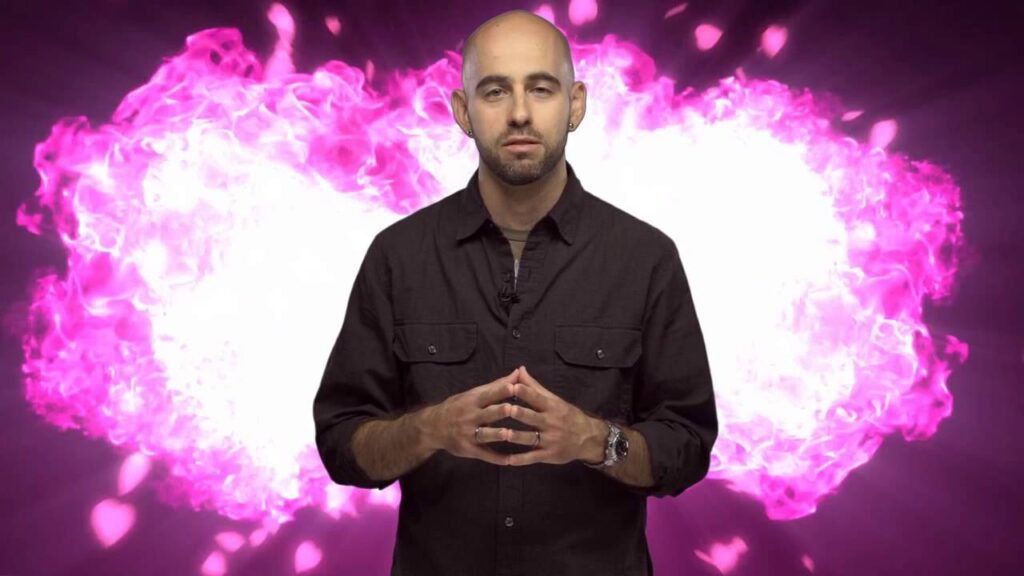Space Travel: Insights from Astronaut Nicole Stott
Summary
In this Q&A style article, astronaut Nicole Stott provides answers to a range of questions related to space travel. Some of the topics discussed include radiation protection, space debris, space sickness, supply ships, and the experience of being in space. She also talks about the Space Launch System and the importance of always wearing an oxygen mask while flying.
Table of Contents
- Radiation Protection in Space
- Dealing with Space Debris
- The Experience of Being in Space
- Health Issues for Astronauts Returning to Earth
- Supplies and Cargo Ships Sent to the International Space Station
- Space Launch System and Future Propulsion Methods
- Life on the International Space Station
- What Happens When a Ship Explodes in Space
- Oxygen Masks and Flight Safety
Introduction
Space travel has always been one of the most fascinating topics that people are curious about. With all its risks, unknown factors, and distinguished experiences, people are naturally attracted to knowing more about it. In this article, we’ll have a conversation with Nicole Stott, the former NASA astronaut, to answer some of the most frequently asked questions about space travel.
Q&A
Radiation Protection in Space
Q: How do astronauts protect themselves from radiation in space?
A: “So, radiation protection in space is something that’s very important, there’s some natural things that shield us a little bit from cosmic radiation, but we also think about other things like the unfiltered UV rays that can be really damaging to the skin and things like that, so we always have protective clothing that we wear, we always have certain materials on board that we’ll use to kind of block out the UV rays, and there’s some other kinds of features that help with that too, but definitely something that we always think about and try to protect from.”
Dealing with Space Debris
Q: How do you track space debris in space?
A: “So, there are a number of ways, Again, we have ground-based or space-based radar systems that are used to track something that small, and we’re constantly looking, you know, that’s a big deal to make sure that debris isn’t going to hit the space station. The distances involved with orbital spaceflight can be quite large, and it’s really making sure that we have a good sense of orbit, what the timing of all that is, a good understanding of where the debris is, and then, if needed, if it’s something that we’re really concerned about, the ability to make adjustments in the spacecraft’s attitude to help us kind of scoot out of the way of a potential impact.”
The Experience of Being in Space
Q: What is it like being in space?
A: “Being in space is amazing, it’s really kind of overwhelming in a lot of ways, especially at first. You see the Earth just going by underneath you, you see these giant thunderstorms and lightning strikes and things like that. You see shooting stars all the time as the Earth is revolving underneath you, so watching that night sky is always a fun thing.”
Health Issues for Astronauts Returning to Earth
Q: What health issues do astronauts face when they return to Earth?
A: “There’s a little bit of everything coming back from space. For one, we get kind of space-sick, the fluids in our bodies get redistributed while we’re in space, so when we come back to Earth, you might feel really terrible, like you have the flu or something like that. You can have a headache, it’s very common to feel just not well in the first few days to maybe even two weeks after coming home. Then there’s some longer-term things, we worry a lot about things like bone density, so we’re always trying to exercise when we’re up in space, doing resistance exercises to try to combat any loss of bone density, and then there’s radiation effects, so you’re exposed to a lot of cosmic radiation when you’re up in space, and that has definite effects on our body, so it’s something that we pay a lot of attention to.”
Supplies and Cargo Ships Sent to the International Space Station
Q: How often are supplies and cargo ships sent to the International Space Station?
A: “We have a couple of regular cargo ships that go up, there’s the SpaceX Dragon that goes up, Northrop Grumman also has a cargo ship that does supply missions up to the space station, and then there’s a Japanese cargo ship as well, so those are all a few times a year. And then we also will have visitors on board, so we have a regular traffic flow of things going back and forth.”
Space Launch System and Future Propulsion Methods
Q: What powers SLS, the Space Launch System?
A: “Well, SLS is going to be powered by a number of engines, it’s not going to be the old shuttle engines, so those wouldn’t be reused. They’re actually in the process of building more engines, but a lot of the research that’s happening now is for new types of propulsion. They’re looking at more electric, more solar types of propulsion system, and it’s been really exciting to see that research go, and I’m hopeful that we’ll start seeing things fly soon using some of these new technologies.”
Life on the International Space Station
Q: Do astronauts ever get bored on the International Space Station?
A: “No, we don’t really have enough time to get bored. There’s all sorts of things to do, we have a job to do, but we also have a great view out of the window. It’s just fun to watch and think about what you could be doing there on the Earth, things you could be exploring. Of course, we have people on board from different countries, so there’s always lots of stories to share, lots of culture to share. Then, people bring up hobbies, there might be someone who likes to play a guitar who brings a little travel guitar with them, so there’s always new and fun, interesting things going on.”
What Happens When a Ship Explodes in Space
Q: What happens when a ship explodes in space?
A: “Typically, if a ship does explode in space, everything initially will be uninhibited and will continue on the trajectory that they were on, but what will ultimately happen is that everything will start to slow down and start to burn up in the atmosphere. I wouldn’t say immediately, that’s part of the risk is that you don’t ever know when it’s going to come back or where it’s going to come back, but typically if something like that were to happen, it would be something that would burn up in the Earth’s atmosphere.”
Oxygen Masks and Flight Safety
Q: Why is it important to always wear an oxygen mask while flying?
A: “It’s really important, especially in some of the planes like the T-38 trainer, that I used to fly with the NASA program, because we can be flying at altitudes where we need to have oxygen. In fact, most of the time, we do fly with oxygen. We train with it, we practice with it, and we have an understanding of how important it is for our safety. And it is also why, when we’re flying in those kinds of planes, we always wear at least a partial pressure suit to help protect us further in the event of any kind of compromise to the environment that we’re in.”
Conclusion
Nicole Stott’s insights into space travel were enlightening, and we hope that this Q&A session answered many of the questions people had. Astronauts face many risks while in space, but with the advancement of technology, we can cope with many of them. And with the work NASA is doing in terms of new propulsion methods and other areas, we can expect to see more people traveling to space in the not-too-distant future.







